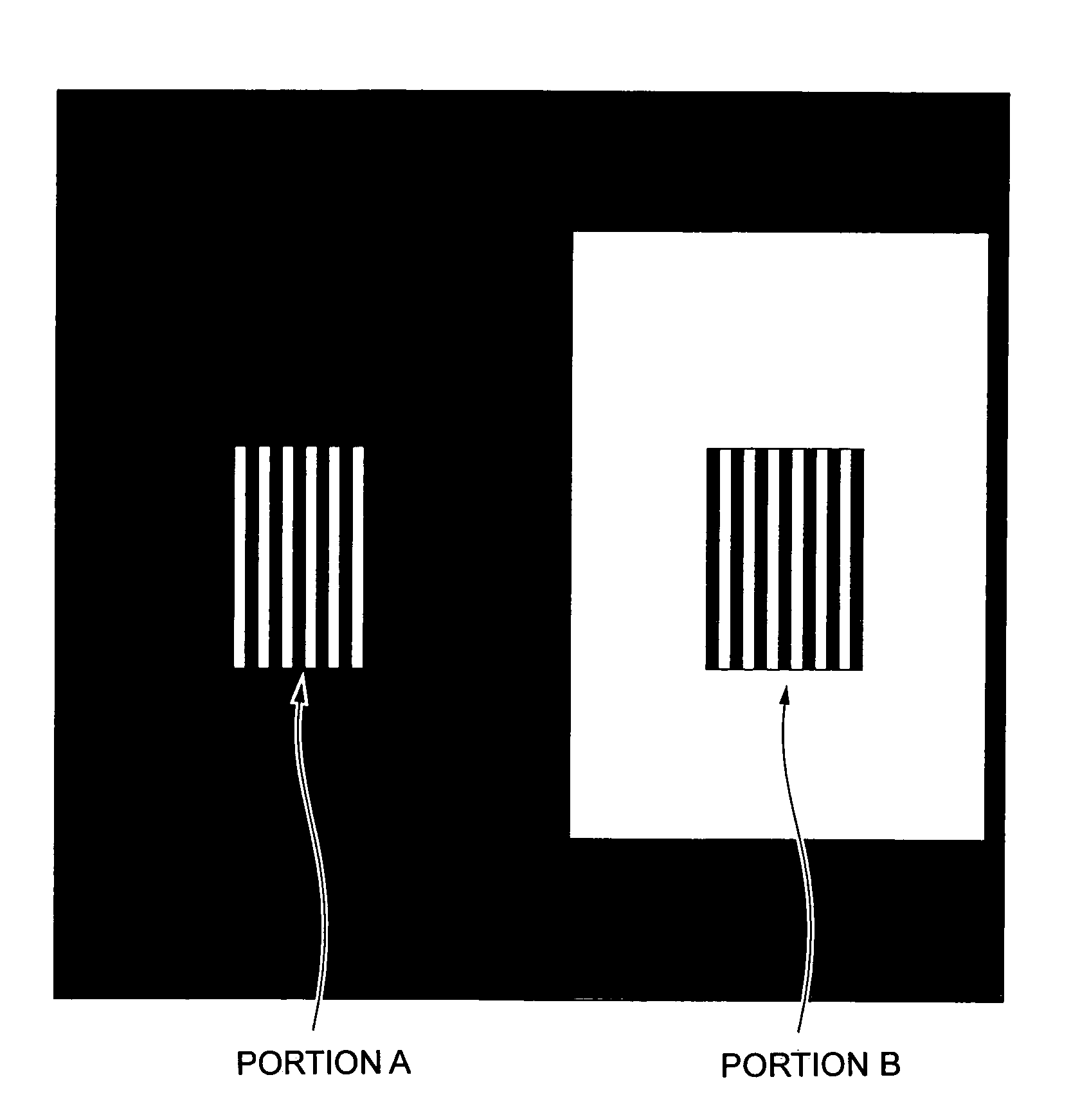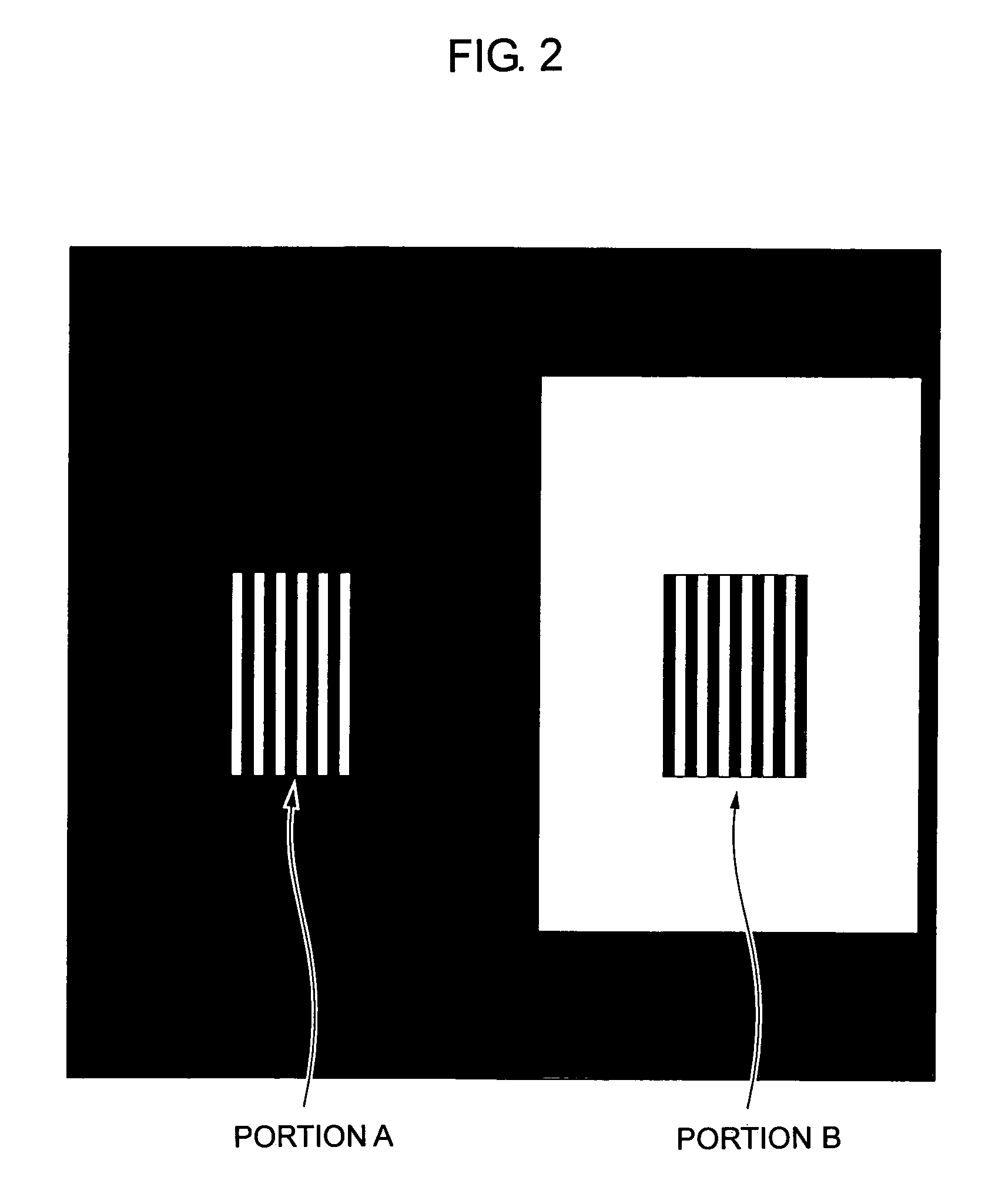Photomask producing method and photomask blank
a technology of photomask and producing method, which is applied in the field of photomask producing method and photomask blank, can solve the problems of variation in cd accuracy, particularly difficult control of etching progress directivity, and difficulty in cd accuracy variation, so as to reduce the damage to the surface of the chromium film, reduce the problem, and reduce the loading effect
- Summary
- Abstract
- Description
- Claims
- Application Information
AI Technical Summary
Benefits of technology
Problems solved by technology
Method used
Image
Examples
first embodiment
[0072]Referring to FIG. 1, description will be made of a photomask producing method according to the first embodiment of this invention.
[0073]First, a substrate made of quartz was mirror-polished and was subjected to prescribed washing to thereby obtain a light-transmissive substrate 1 of 6 inches×6 inches×0.25 inches.
[0074]Then, by the use of an in-line sputtering apparatus where a plurality of chromium (Cr) targets were disposed in the same chamber, an opaque chromium film 2 was formed on the light-transmissive substrate 1 (see FIG. 1(a)).
[0075]Specifically, first, reactive sputtering was carried out in an atmosphere of mixture gas of argon (Ar) and nitrogen (N2) (Ar:N2=72:28 [volume %], pressure 0.3 [Pa]) to thereby form a CrN film having a thickness of 20 [nm].
[0076]Subsequently, reactive sputtering was carried out in an atmosphere of mixture gas of argon (Ar) and methane (CH4) (Ar:CH4=96.5:3.5 [volume %], pressure 0.3 [Pa]) to thereby form a CrC film having a thickness of 37 [n...
second embodiment
[0089]Referring to FIG. 1, description will be made of a photomask producing method according to the second embodiment of this invention. In the second embodiment, a photomask was produced under the same condition as in the first embodiment except that the opaque chromium film 2 was etched using only the inorganic-based etching mask pattern 31 as a mask after removal of the resist pattern 41 in the first embodiment.
[0090]Specifically, first, a substrate made of quartz was mirror-polished and was subjected to prescribed washing to thereby obtain a light-transmissive substrate 1 of 6 inches×6 inches×0.25 inches.
[0091]Then, by the use of an in-line sputtering apparatus where a plurality of chromium (Cr) targets were disposed in the same chamber, an opaque chromium film 2 was formed on the light-transmissive substrate 1 (see FIG. 1(a)).
[0092]Specifically, first, reactive sputtering was carried out in an atmosphere of mixture gas of argon (Ar) and nitrogen (N2) (Ar:N2=72:28 [volume %], p...
third embodiment
[0115]Referring to FIG. 3, description will be made of a photomask producing method according to the third embodiment of this invention.
[0116]First, a substrate made of quartz was mirror-polished and was subjected to prescribed washing to thereby obtain a light-transmissive substrate 1 of 6 inches×6 inches×0.25 inches.
[0117]Then, by the use of a mixture target of molybdenum (Mo) and silicon (Si) (Mo:Si=20:80 [mol %]), reactive sputtering was carried out in an atmosphere of mixture gas of argon (Ar) and nitrogen (N2) (Ar:N2=10:90 [volume %], pressure 0.3 [Pa]) to thereby form an MoSiN-based light-semitransmissive phase shift film 5 having a thickness of 100 [nm] on the light-transmissive substrate 1 (FIG. 3(a)).
[0118]Then, by the use of an in-line sputtering apparatus where a plurality of chromium (Cr) targets were disposed in the same chamber, an opaque chromium film 2 comprised of a CrN film, a CrC film, and a CrON film was formed on the phase shift film 5 according to the same met...
PUM
| Property | Measurement | Unit |
|---|---|---|
| width | aaaaa | aaaaa |
| width | aaaaa | aaaaa |
| width | aaaaa | aaaaa |
Abstract
Description
Claims
Application Information
 Login to view more
Login to view more - R&D Engineer
- R&D Manager
- IP Professional
- Industry Leading Data Capabilities
- Powerful AI technology
- Patent DNA Extraction
Browse by: Latest US Patents, China's latest patents, Technical Efficacy Thesaurus, Application Domain, Technology Topic.
© 2024 PatSnap. All rights reserved.Legal|Privacy policy|Modern Slavery Act Transparency Statement|Sitemap



